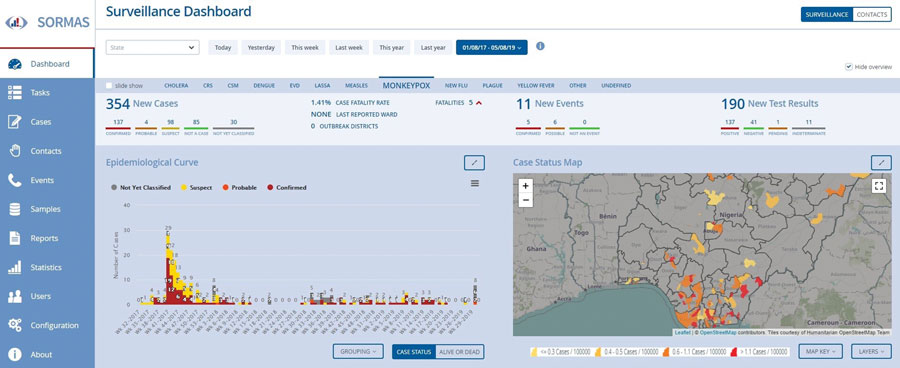Volume 26, Number 2—February 2020
Dispatch
Use of Surveillance Outbreak Response Management and Analysis System for Human Monkeypox Outbreak, Nigeria, 2017–2019
Figure 1

Figure 1. SORMAS dashboard showing monkeypox cases notified September 2017–July 2019 in Nigeria. The map shows the spatial spread of cases with local government area color by incidence proportion/100,000 population. The incidence proportion ranges from 0.1 (quartiles 0.3–0.7) to 8.1. During 2017, the number of cases by epidemic week increases gradually from week 32 to week 39, sharply increases in week 40, and gradually declines until week 53. Exportation of graphs, tables, and other epidemic indicators was generated in the statistic module of SORMAS. SORMAS, Surveillance Outbreak Response Management and Analysis System.
Page created: January 20, 2020
Page updated: January 20, 2020
Page reviewed: January 20, 2020
The conclusions, findings, and opinions expressed by authors contributing to this journal do not necessarily reflect the official position of the U.S. Department of Health and Human Services, the Public Health Service, the Centers for Disease Control and Prevention, or the authors' affiliated institutions. Use of trade names is for identification only and does not imply endorsement by any of the groups named above.